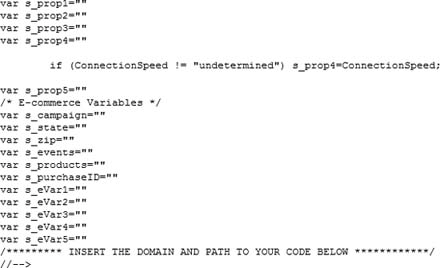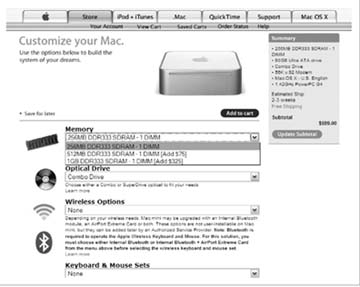Hack31.Use Custom Variables Wisely
Hack 31. Use Custom Variables Wisely
Use of custom variables to track data most relevant to your business, generating a more complete view of the visitor in the process. While there is no industry standard definition, a custom variable is essentially an addition to your standard web site data collection strategy, commonly collected via a page tag or query string parameter and stored in a client-side cookie (Figure 2-18). You can have many custom variables per cookie, each containing a name=value pair such as "color=blue" or "rating=five stars". Custom variables can be used to count nontraditional data elements, but are ideally tied to a specific business objective. Figure 2-18. **pd#119**Custom variable deployment When an objective tied to a custom variable is reached, the web measurement application records the event (and any quantifiable value of the event). Through this simple process, you can gain valuable insight into which initiatives are most successful. 2.20.1. Uses for Custom VariablesAs long as your measurement application supports these custom variables, the opportunities are unlimited. Some examples of common uses for custom variables include:
Finally, one of the most popular uses for custom variables is to measure use of "configurators" or product selection engines (Figure 2-19). To do this, simply capture the results of each feature selection set as a visitor moves through the process. The end result is a list of custom variables that will help you understand which features or configurations are most commonly selected and compare that list to the features that customers actually purchase. Figure 2-19. The product "configurator" at store.apple.com This specific use of custom variables is gaining a great deal of traction lately, and companies are using the information gained to make and save millions of dollars annually. 2.20.2. One-to-One Direct Marketing and Custom VariablesThose of you who live on the edge should consider using custom variables to support one-to-one direct marketing efforts by passing a unique user identifier [Hack #5] into a custom variable during your login authentication process. By correlating this user identifier with web behavior, you can market to an individual that has been authenticated on your web site, usually by using your measurement application to export the list of names into your email or customer relationship management application. A more sophisticated use of this strategy is to export email addresses only for visitors who completed a specific set of actions (such as downloaded a document or viewed a set of pages).
The use of custom variables and the collection of personally identifiable data require care and caution. This means having users opt-in to receive marketing communications, updating your compact privacy policy [Hack #27] to reflect these intentions, and updating your privacy statement [Hack #26]. This type of activity should not be undertaken lightly and should involve highlevel decision makers. The legal folks should also be involved, along with officers of the company to ensure consensus. 2.20.3. Custom Variables in Action: An ExampleSay your company is running a referral survey that asks customers how they heard about your business. You could ask this question during member registration, shopping cart checkout, or customer support. Using a custom variable to track these responses would easily show you which referral sources drive the greatest customer acquisition. Still, any basic survey system or database can tell you that, so what else can you learn using custom variables? Figure 2-20 illustrates why you'd want to use custom variables to gather survey data, helping to fill in the blanks between web measurement and survey data. As you can see, "Radio Ads" (line 1) drove most customersthe most of any referral source. If you stopped your analysis there, you might recommend that your company invest more in radio advertising, and while logical, that would be a poor recommendation. Notice that while "Radio Ads" are the top customer acquisition source, they are not the leader in revenue conversion or lifetime value, which are your true performance indicators. Now look at the "Billboard" referral source (line 4): at $18.64, initial revenues are the highest of any referral source. This valuable insight helps you evaluate where to focus your future customer acquisition efforts. However, using custom variables, you can take this one step further to examine lifetime customer value [Hack #84]. You may not be surprised to notice that customers referred by "Relatives" generate the most lifetime value, followed closely by "Friends." Figure 2-20. Using custom variables Hopefully, you can see how custom variables are often the "missing link" between the data that measurement vendors want to provide and the information you may really need. Web measurement vendors have done a great job building out flexible data collection mechanisms, but stop short of being customized to your unique business needs. Custom variables let you do just that; capturing critical data and providing valuable insights that you really need to manage your business. Matt Belkin and Eric T. Peterson |
EAN: 2147483647
Pages: 157
